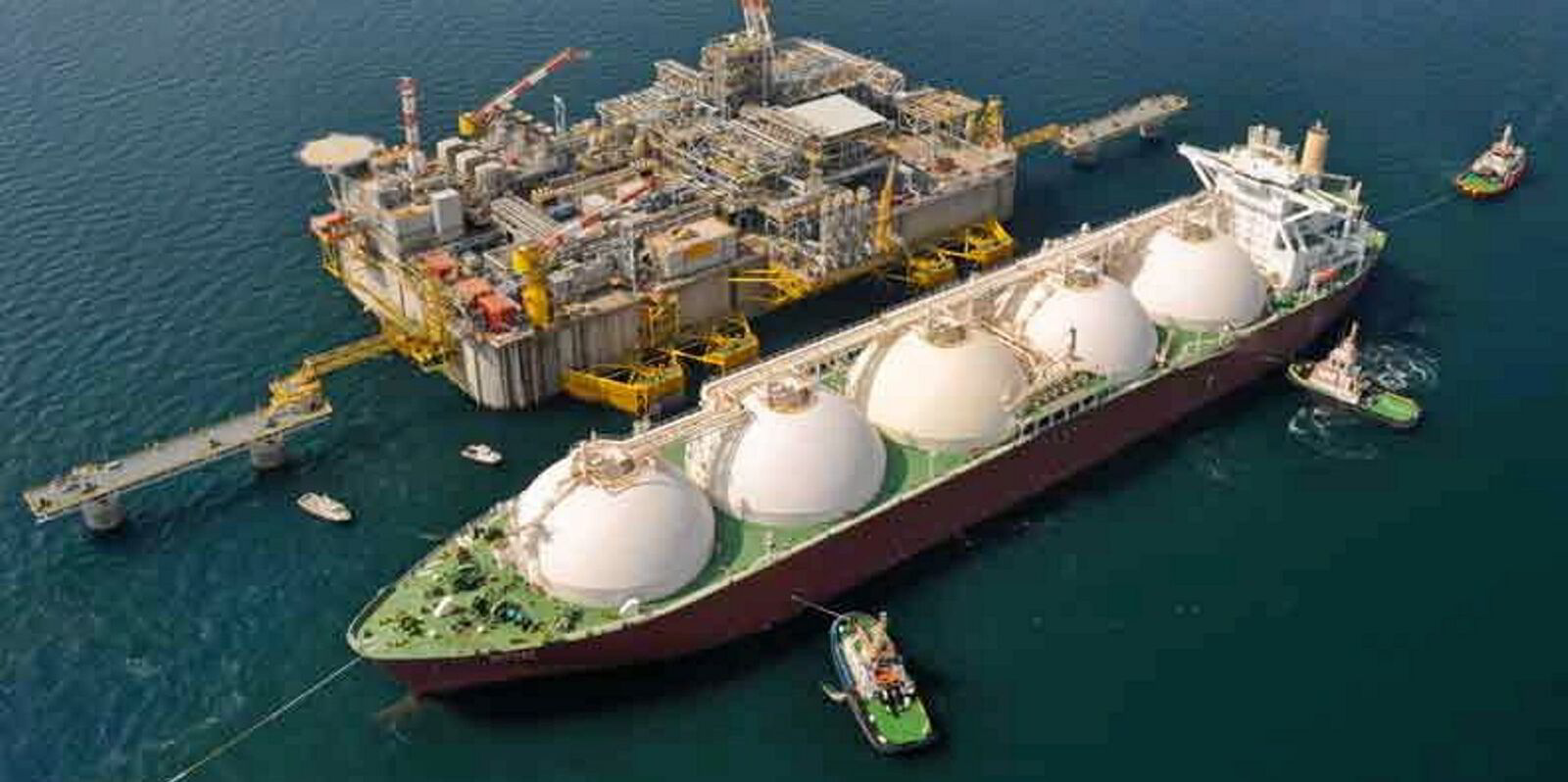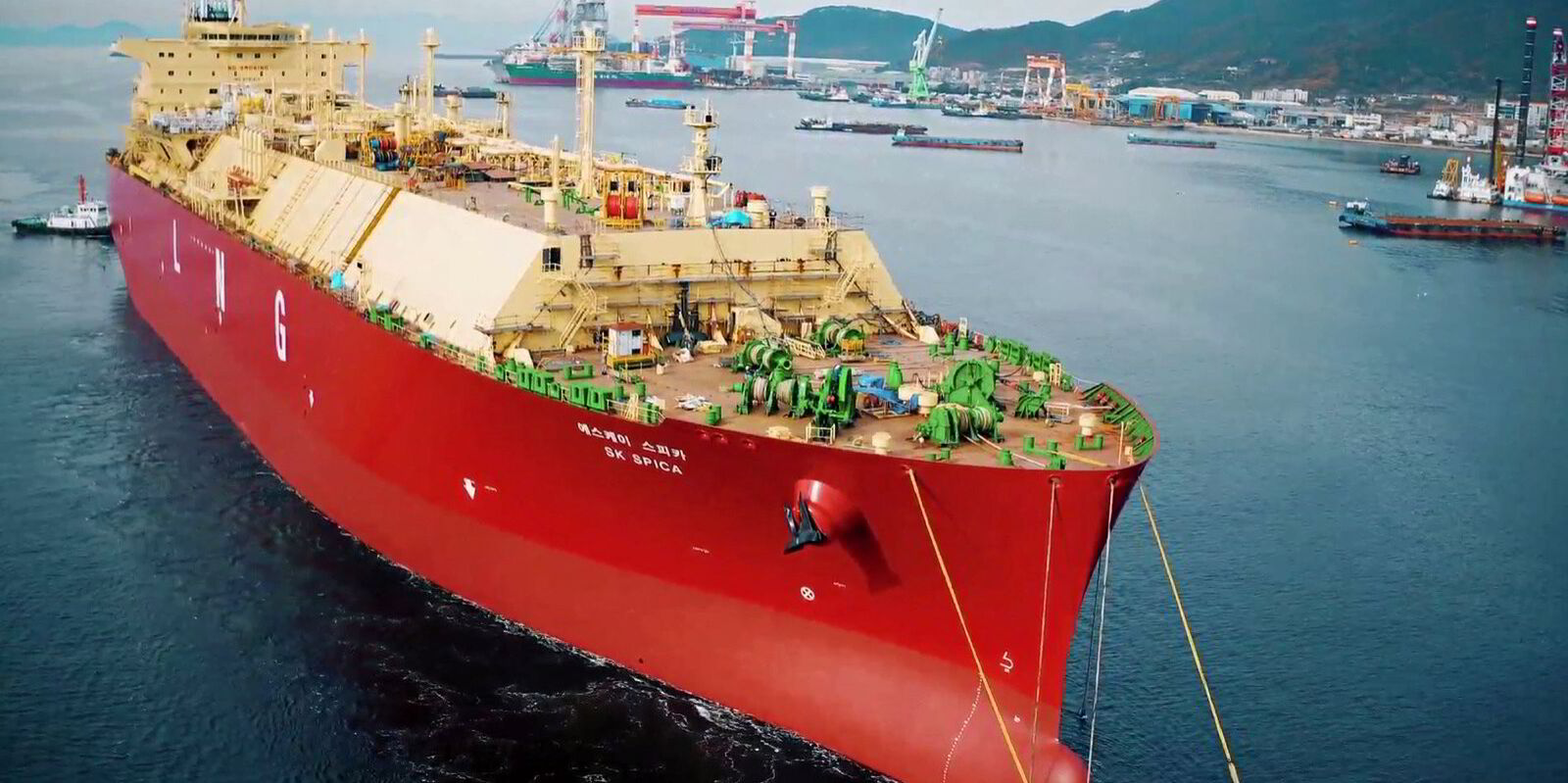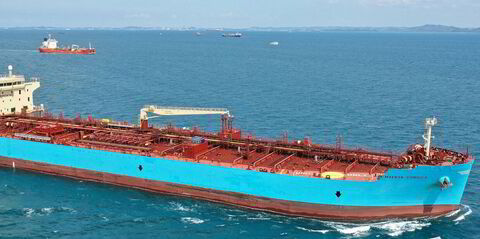A 20-year-old, steam turbine LNG carrier controlled by Japan’s Mitsui OSK Lines has been idled in an area traditionally used for lay-up as prospects for older vessels are slim.
Brokers said the 137,661-cbm Moss-type LNG carrier Dukhan (built 2004) had been laid up.
Kpler data shows the steamship arrived in Brunei Bay in mid-September and is anchored off Labuan in east Malaysia.
The vessel, listed under the control of Tokyo Gas, is last shown as lifting cargo from Australia to Indonesia in August.
The Dukhan was famously left out of a purchase of a raft of 10 LNG steamships from a consortium of four Japanese shipowners in 2022 by Qatargas.
The Qatari LNG producer bought the vessels at the end of their 25-year time-charter contracts at what was said to be a discounted price close to their then residual values of just over $10m per ship, as agreed when their original time charters were drawn up.
The elderly LNG carrier was at one point touted as the likely floating storage unit that was to be used for Swan Energy’s import project in India.
But the infrastructure for this development suffered cyclone damage and it has not moved forward.
MOL said it could not comment when asked about the vessel’s status.
The Dukhan is recorded on Clarksons’ Shipping Intelligence Network database as “idle”.
The vessel is by no means among the oldest in the world fleet, which includes almost 40 ships built pre-2000.
SIN records about 20 LNG carriers as idle. The bulk of these are steam turbine LNG carriers with four of the vessels detailed as dual-fuel diesel-electric ships.
Five LNG carriers are currently recorded as “laid up”.
These include the Indonesian-controlled, 126,300-cbm LNG Aquarius (built 1977), which had previously worked as a shuttle ship in tandem with the 125,000-cbm floating storage and regasification unit Nusantara Regas Satu (built 1977), MISC’s 137,100-cbm Puteri Delima Satu (built 2002) and the Sinokor Merchant Marine-controlled 126,300-cbm Gulf Energy (built 1978).
The more modern 174,100-cbm SK Spica and SK Serenity (both built 2018) are also laid up in Brunei Bay.
Offers — for further trading or demolition — have been invited on these two ships, which have experienced issues with their Kogas-designed KC-1 LNG cargo containment systems.
Steam turbine LNG carriers were already at a crossroads but the current dismal charter market has brought their future into sharper focus.
The vessels rank as the oldest in the world LNG fleet and are smaller and less efficient than their more modern cousins.
Shipowners have already been moving to clean them out of their fleets with sale-and-leaseback deals, straight sales and a drip feed of tonnage being floated on the market to prospective buyers as long-term charter deals end. Some cling to conversion prospects for their vessels.
Brokers have expressed a growing expectation that this quiet emergence of tonnage could become a deluge by the year-end.
For sellers and brokers, the market for some of these older ships has become something of a minefield after several secondhand steamships have exchanged hands at high prices to buyers connected to Russian interests.
There also appears to be a reluctance to scrap LNG vessels, with just three sent to the breakers so far this year.
But in the past few weeks, the situation has been further compounded by plummeting charter rates that have seen steamers all but cut out of the chartering picture with rates pegged from zero to $10,000 per day.






